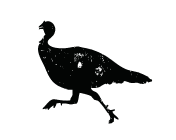280,000
Est. Whitetail Population
130,000
No. Licenses Sold Annually
$62 and up
Statewide archery or muzzleloader tag is $37. Statewide whitetail buck tag (archery, firearm or muzzleloader) is $88. Restricted statewide buck tag is $128. Statewide buck tag (quota) is $173. Habitat stamp is $25.
Resident hunting license and deer permit
$267 and up
Statewide archery or muzzleloader tag is $242. Statewide whitetail buck tag (archery, firearm or muzzleloader) is $600. Restricted statewide buck tag is $698. Statewide buck tag (quota) is $798. Habitat stamp is $25.
Non-resident hunting license and deer permit
199 2/8"
Taken by Vernon A. Virka in Saunders County in 1983 and ranks 26th all-time.
Record B&C Typical Stat
236
Total B&C Typical Entries
284"
Taken by Wesley A. O’Brien in Richardson County in 2009 and ranks 16th all-time.
Record B&C Non-Typical Stat
152
Record B&C Non-Typical Entries

Check out the latest info for Nebraska. Image by Thomas Torget
Season Dates (2023):
Bow season runs Sept. 1 to Dec. 31. Gun season is Nov. 11 through 19. Muzzleloader season runs Dec. 1 through 31. Additional antlerless seasons apply in certain areas. These are the dates set when published. Check the Nebraska Game and Parks WEBSITE to confirm.
The Grade: B
The Cornhusker State is great for whitetails. The deer herd is plentiful, with the higher densities in the southeastern part of the state and along major river corridors. Some of the bucks in the state get old, and that’s what it takes to have big deer.
Nebraska is one of few states that publishes detailed data in its annual regulations book. You’ll find a breakdown of each region, total harvest, how many bucks per square mile were killed, and the age class of the bucks taken. That is solid info that can help drill down on areas to try.
Despite all of the good, a few things count against the state. Nebraska isn’t for those who don’t like having a rifle season during the rut, which has the potential to affect buck age structure. For those who rifle hunt, tags aren’t easy to obtain, and prices are extremely high. Third, compared with other states, public land is limited. All said, it gets a B for 2023.
Antler Nation Knowledge:
Nebraska offers three deer permits that are limited draw. That process occurs in June, but remaining over-the-counter tags go on sale Aug. 3 at 1 p.m. CST. Many of those tags go quickly. Don’t procrastinate.
As for access, this state is less than 3% public, but some of the public is really good. The Nebraska Game and Parks Commission works with Pheasants Forever, the Nebraska Environmental Trust, the U.S. Department of Agriculture, natural resource districts, and others to increase public access. It also established the Open Fields and Waters Program to open an additional 346,000 acres of private land to hunting. The Passing Along the Heritage Program offers limited opportunities, too. And of course, wildlife management areas, some state parks and state recreation areas, waterfowl production areas, Platte River recreation access, and other smaller programs increase access, too. To view these, Nebraska’s PUBLIC ACCESS ATLAS is a valuable tool for hunters.
Drilling down on specific locations, eastern Nebraska is the most consistent region for trophy production. Cass, Cedar, Dodge, Douglas, Gage, Jefferson, Johnson, Lancaster, Nemaha, Otoe, Pawnee, Richardson, Sarpy, Saunders, and Washington counties are among those. A few western and central counties hold their own, too, including Holt, Furnas, Keya Paha, and Lincoln. Counties aside, river corridors generally have the best genetics, habitat, nutrition, and deer densities, and the biggest bucks.










































